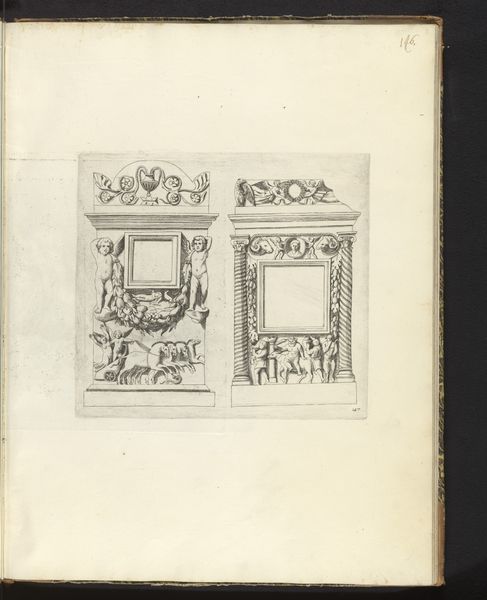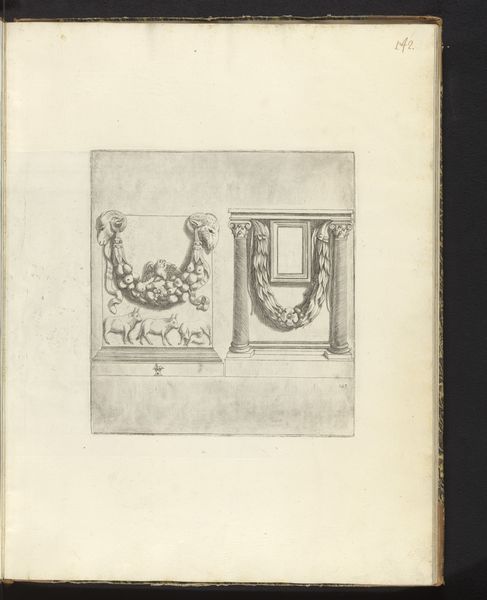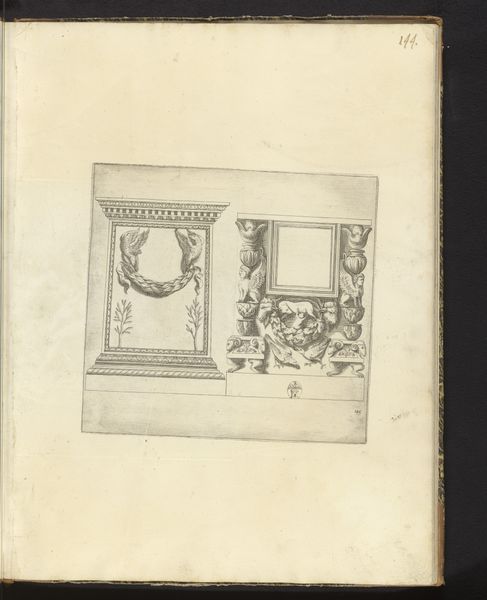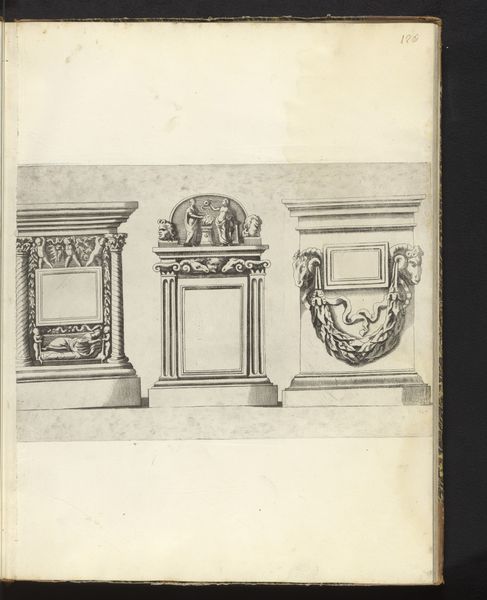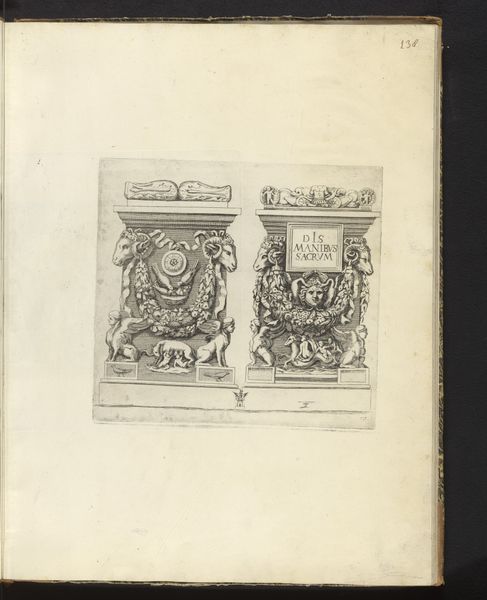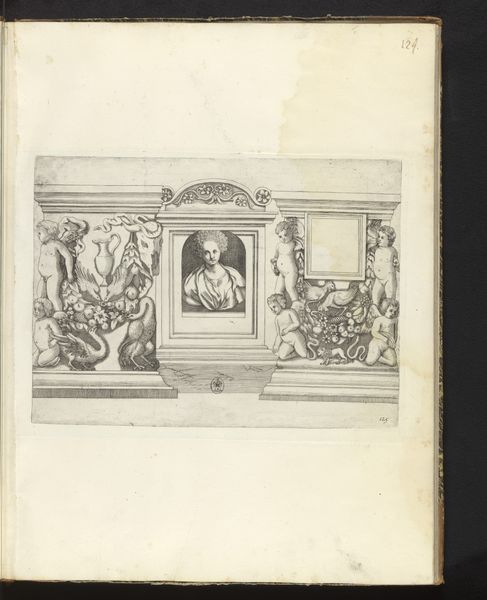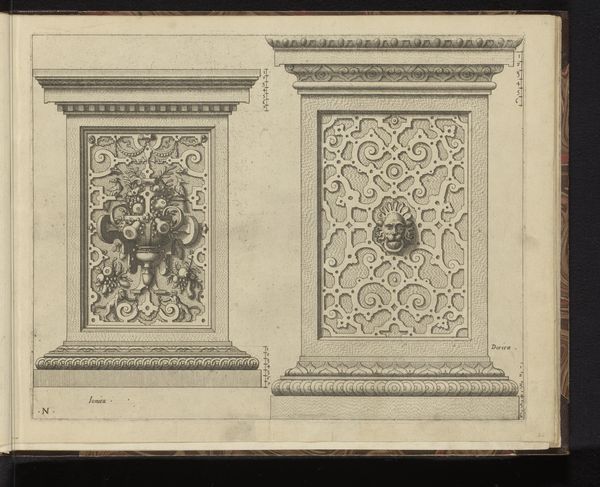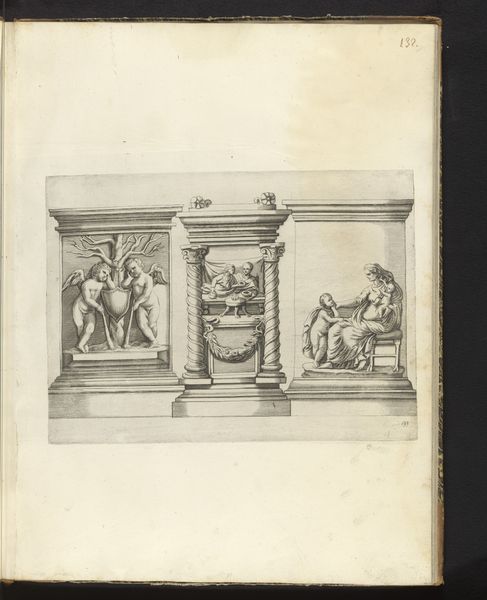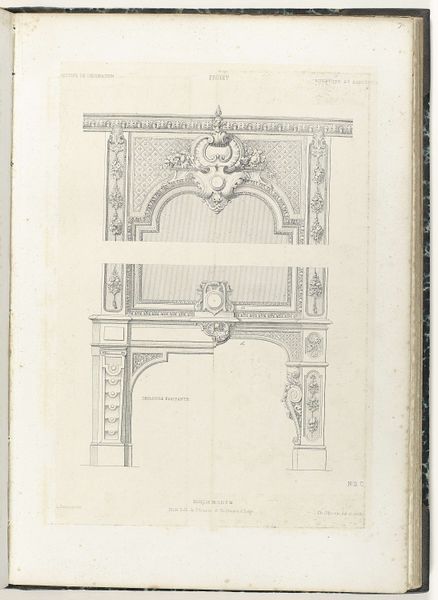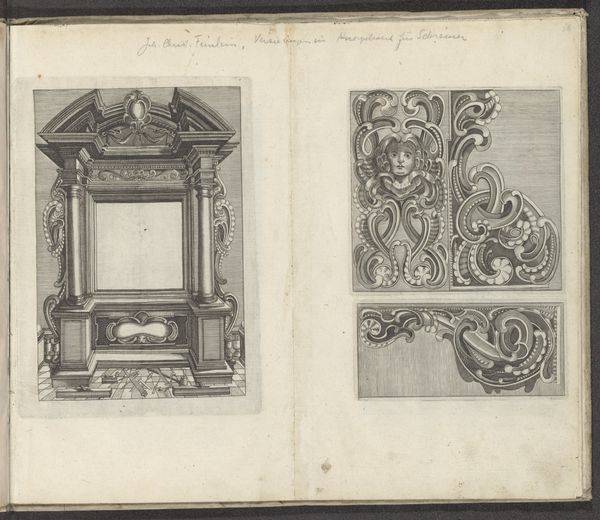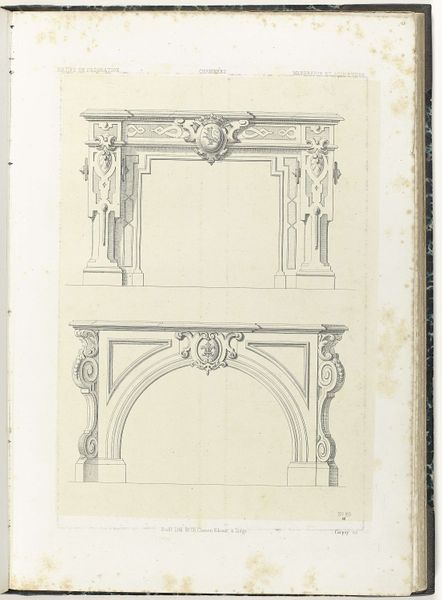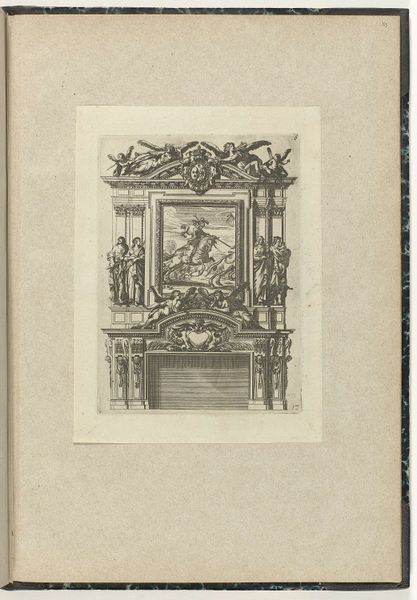
Drie piëdestallen waarvan de middelste met een vruchtenguirlande 1636 - 1647
0:00
0:00
pieterdebailliu
Rijksmuseum
drawing, paper, ink, pen
#
drawing
#
aged paper
#
toned paper
#
baroque
#
sketch book
#
paper
#
personal sketchbook
#
ink
#
pen-ink sketch
#
pen and pencil
#
pen work
#
sketchbook drawing
#
pen
#
storyboard and sketchbook work
#
sketchbook art
Dimensions: height 229 mm, width 312 mm
Copyright: Rijks Museum: Open Domain
Curator: Well, hello there! Pieter de Bailliu gave us this gem somewhere between 1636 and 1647. It’s called "Three pedestals, the middle one with a fruit garland.” Pen and ink on paper, so simple yet so elegant. Editor: My first impression? This piece feels restrained, almost architectural in its precision, despite being “just” a sketch. There is something so grounded about it. Though in what context would something like this find social meaning? Curator: Ah, that's interesting! It feels playful to me! Like De Bailliu was just doodling possible set designs while humming a little tune. But, social meaning? Editor: Consider the symbolism embedded in classical motifs: power, virtue, even empire. Displayed publicly, these wouldn't merely be ornaments. Pedestals literally elevate, so they symbolically affirm a hierarchy. The garlands, rendered meticulously, add a layer of celebratory legitimacy. Curator: You know, I think I got too lost in the pen work there! The garland does change the game a bit, right? A little softness juxtaposed with the strong lines of the pedestals... like a wink! But how serious *were* these symbols then, do you think? Editor: Art in the baroque era had a didactic imperative, one must see beyond "decoration." Power consolidates, so its imagery evolves. Look at the clean lines in these sketches—order was prized above almost all else during the mid 17th century, but here we also find ornament; there's even tension. The key to Baroque art is never, ever, simplification. Curator: And yet, it's just a *sketchbook* piece. So maybe our De Bailliu just wanted to try stuff, without pressure. No art without freedom, right? So who knows, he could be thinking anything with such "order." Editor: It reminds me to consider who is permitted freedom, who decides what that means, and how their power informs whose freedom even *matters.* I didn't come here to have feelings... Thanks, Pieter! Curator: Precisely, each line, and indeed each absence, tells a little tale. Food for thought on something so deceptively "simple"!
Comments
No comments
Be the first to comment and join the conversation on the ultimate creative platform.

